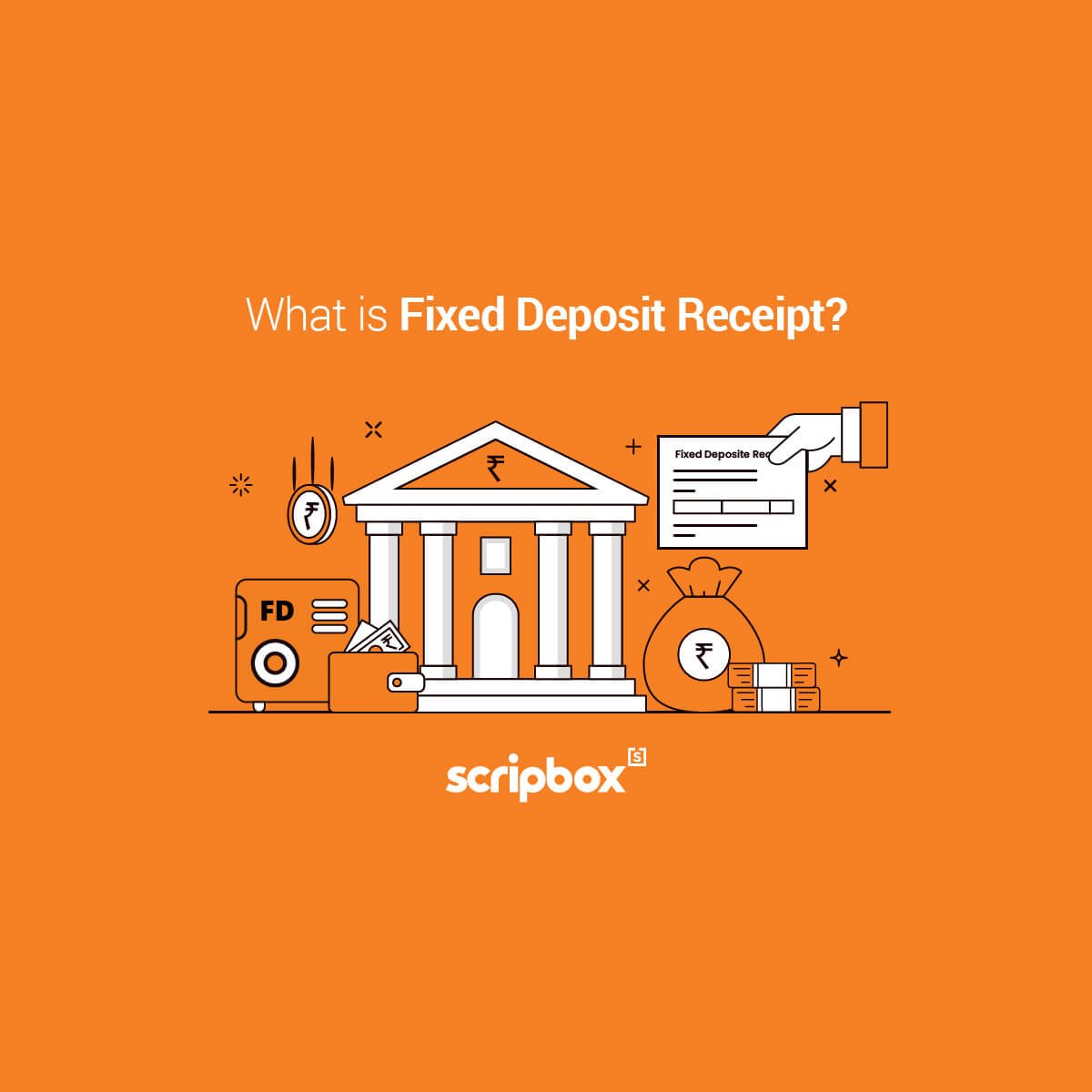Fixed deposits are the most popular and sought-after investment options in India. Investors have the freedom to choose the investment amount and tenure of the deposit. However, investors need to withdraw their investments earlier than intended to meet certain emergencies. Also, there are situations where the investor doesn’t need the money post maturity. In such cases, banks allow investors to withdraw their investment prematurely or renew the investments for certain tenure. This article covers FD auto-renew and repay in detail.
Renewal of Fixed Deposit
Fixed deposits can be renewed by the FD holder either by opting for auto-renewal or by renewing it manually after maturity.
Auto renewal
Auto renewal of fixed deposit happens only when the investor gives a standing instruction to the bank or financial institution. The investor can opt for auto-renewal right at the time of investing in FD or during the tenure of the FD. Upon maturity the FD will be auto-renewed by the bank for the same tenure at the prevailing interest rates. The current FD interest rate can be higher or lower than the previous interest rate of the FD. Therefore, auto-renewal can be disadvantageous if the interest rates fall.
Renewal by deposit holder post maturity
FD renewal happens when the investor manually opts for renewal by physically visiting the branch of the bank or through online. Investors have to renew the FD on maturity. Hence, they have to keep track of their fixed deposit investments. If the investor opts for renewal, then the bank will renew the FD for the same tenure at the current interest rates. The current interest rate can be higher or lower than the previous interest rate of the FD.
Withdrawal from Fixed Deposit
Investors can withdraw their FD investment after maturity or before maturity by opting for premature withdrawal. Premature withdrawal, however, attracts a penalty.
After Maturity
An investor can withdraw FD investment and the interest earned on the FD after the FD reaches its maturity. Investors can opt for auto-withdrawal of the FD, where the bank will automatically credit the maturity proceeds into the investor’s savings bank account. Alternatively, investors can opt for withdrawing the FD manually upon maturity. In this case, once the investor withdraws, the bank will repay principal and interest amount to the investor. However, investors have to keep track of their term deposit to withdraw their investment.
Premature withdrawal
Investors can opt for premature withdrawal of the FD to meet any emergencies or liquidity requirements. However, to withdraw their FD investments prematurely, investors need to pay the penalty. The penalty is usually in the form of interest on the contracted FD interest rate. Upon premature withdrawal the bank will cut the penalty from the accumulated interest and credits the rest to the investor’s savings bank account. The penalty ranges from 0-1% for most banks.
How to withdraw a Fixed Deposit prematurely?
Depositors can prematurely withdraw their FDs either online or offline by physically visiting the bank branch. Also, it is important to note that many banks allow online withdrawals only if the deposit was booked online. Furthermore, an active online banking facility is a prerequisite.
For online withdrawals, one must follow the below steps:
- Log in to the bank’s website using the internet banking login credentials.
- Upon successful login, in the account homepage, under the ‘Fixed Deposit’ section, select the ‘Close FD account prematurely’.
- A list of all active FDs will be displayed. One needs to select the FD scheme that they wish to close prematurely.
- Verify with all the required details and provide the credentials for authenticating the transaction. The funds will get credited to the savings account or current account linked to the fixed deposit.
The steps to prematurely withdraw the term deposits may vary from bank to bank as the banking interface for each differs. However, it is a simple procedure to close the FD prematurely.
For offline withdrawals, one has to visit the bank branch. Fill the fixed deposit closure form and submit all the necessary documents. Also, depositors have to surrender their Fixed Deposit Receipt (FDR).
Points to Remember before opting for a premature withdrawal of term deposit
Premature withdrawals do not come for free. There is some penalty that the depositor has to bear for prematurely withdrawing their deposits. Following are the points to remember and consider before opting for a premature withdrawal:
Penalties
For premature withdrawals, depositors have to pay a certain penalty. The penalty usually ranges from 0.50% to 1.00% of the rate of interest. Also, the penalty charges are subject to change with time and the bank’s policies. Therefore, one must carefully read the terms and conditions of the FD to understand the penalty charges.
Loss of interest
For premature withdrawals, the rate of interest is lower than the contractual rate. Since the investor is losing the deposit before its maturity, the interest rates are lower. Therefore, one cannot expect to get the exact amount as per the original interest rate and duration of the deposit. Hence, the interest is lesser than the actual interest if the deposit was held till maturity.
Lower returns
Since the depositor ends up paying high penalty charges and the interest is lower than the actual, the return from the deposit will be lower. Hence, before withdrawing, it is wise to estimate the returns and evaluate if the investment has given decent returns.
Effect on financial growth
A fixed deposit scheme offers guaranteed returns to its depositors. Therefore, the investor relies on FD for their future planning. Also, FDs are a good source of regular income in the form of interest on the deposit amount. Hence, prematurely withdrawing the deposit will have an impact on the financial planning of the investor. The deposit may no longer be the regular source of cash flow and may affect the investor’s financial position. Therefore, it is wise to ensure that the financial position is not negatively impacted by prematurely withdrawing the deposit scheme.
Taxation
Interest on FD is taxable as per the individual’s income tax slab. Therefore, before withdrawal, keep in mind the tax liability as well. Also, note that tax savings FDs cannot be prematurely withdrawn. The depositor has to stay invested for the entire duration of the scheme, i.e. five years. One can estimate their income tax liability using Scripbox’s income tax calculator.
Exceptions
Certain banks offer exceptions on premature withdrawals for senior citizen depositors. For example, there is no penalty charged if a senior citizen depositor closes their FD account prematurely. Therefore, check for such exceptions before concluding the withdrawal process.
Should you opt for auto renewal in fixed deposits?
Auto-renewal in term deposits saves the hassle of visiting the bank physically or using the net banking facility to renew the FD. It also helps investors who have multiple FDs and are unable to keep track of them for renewal.
However, it’s best for investors to renew the FD manually in a falling interest rate scenario. Moreover, some banks only renew the FD for a specific tenure, say one year or for the same tenure as the original FD. The policies, however, differ from bank to bank. By renewing the FD manually, investors can opt for a tenure that offers the highest interest rate and earn higher returns. Also, since banks change FD slab rates frequently, it is ideal if the investor opts for renewing the FD manually.
What happens if you don’t renew or withdraw your fixed deposits at the time of maturity?
If the depositor doesn’t give the maturity instruction for auto-renewal, then the bank doesn’t renew the deposit account. The bank usually intimates the depositor when the maturity date is nearing. Therefore, not claiming the deposit becomes a rare possibility.
In case the depositor hasn’t opted for auto-renewal or doesn’t withdraw the funds, the bank transfers the maturity amount to the bank account provided by the depositor. The transfer is usually done either through National Electronic Fund Transfer (NEFT) or Real Time Gross Settlement (RTGS). If an electronic transfer bounces, the bank will issue a cheque and send it to the investor.
Is there any penalty for premature withdrawal?
Yes, almost all banks and financial institutions charge a penalty for premature withdrawal. The penalty is charged in the form of interest on the contracted FD rate. The penalty is usually in the range of 0%-1%, and the bank cuts the penalty before crediting the amount to the investor’s account.
How do I stop my FD auto renewal?
You need to inform the bank before the maturity date to stop the auto-renewal. Also, if no communication is made with the bank, the account automatically renews, and the depositor will have to pay the penalty for prematurely withdrawing it in the future.
Can I change the maturity instruction just before maturity, and how?
Yes. A maturity instruction is an instruction given by the depositor at the time of opening a fixed deposit. The instruction can be to auto-renew the deposit for the same tenure on maturity. Depositors can change their maturity instructions before maturity. Seven days before the maturity date, depositors have to communicate with the bank whether they would like to withdraw or renew the deposit. If no communication is done, the account gets auto-renewed. Also, depositors can choose to renew the scheme only with the principal amount or with both the principal and interest amount.
Explore Types of Bank Accounts in India
Frequently Asked Questions
All tax-saving deposits have a tenure of 5 years, and the investment has a lock-in of 5 years. No premature withdrawals, loans, or overdraft facilities are allowed on tax-saving FDs.
Yes. One can break their FD before its maturity. Financial emergencies or unforeseen circumstances call for some extra funds. In such cases, one can prematurely withdraw or break their FD. The amount gets credited to the bank savings account or current account of the depositor. However, please note that these withdrawals come with certain penalties.
After the FD matures, investors can choose to renew or withdraw their FD investment. The renewal can be either done automatically by giving standing instructions to the bank or manually after maturity. Investors can also opt to withdraw their investment. They can withdraw the investment either manually or automatically by giving instructions to the bank. The bank will then automatically credit the FD investment and interest amount to the investor’s bank.
SBI charges a penalty of 0.5% for premature withdrawal of deposits up to INR 5 lakhs across all maturities. For deposits above INR 5 lakhs and below INR 1 crore, the penalty is 1%. Also, SBI will not pay interest for deposits held for less than seven days.
Interest earned on FDs is taxable as per the investor’s income tax slab rates. Moreover, banks deduct a TDS of 10% if the interest income exceeds INR 40,000 for regular citizens and INR 50,000 for senior citizens. The bank will deduct a TDS of 20% if the investor doesn’t disclose PAN Card details.
Explore Fixed Deposit Pages
- Renewal of Fixed Deposit
- Withdrawal from Fixed Deposit
- How to withdraw a Fixed Deposit prematurely?
- Points to Remember before opting for a premature withdrawal of term deposit
- Should you opt for auto renewal in fixed deposits?
- What happens if you don’t renew or withdraw your fixed deposits at the time of maturity?
- Is there any penalty for premature withdrawal?
- How do I stop my FD auto renewal?
- Can I change the maturity instruction just before maturity, and how?
- Frequently Asked Questions























Show comments